<From Overseas Office> [China] The Current Situation of Chinese Consumers in a Sluggish Economy
- Release date: Dec 23, 2024
- 4671 Views
“China's economy stalling”, ‘China's economy shrouded in gloom’, ‘A sense of stagnation in China's economy’...
In Japanese newspapers and magazines, we have been seeing more and more headlines like these since last year.
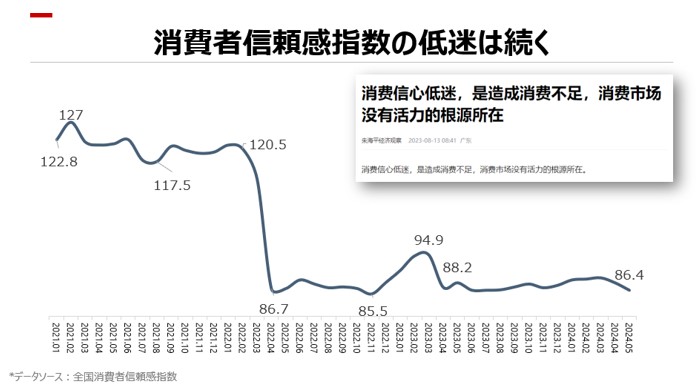
This line graph shows the trend in the consumer confidence index, an economic indicator that expresses consumer sentiment in index form. Simply put, the higher the consumer confidence index, the more consumption there is.
At present, this consumer confidence index is at a low level, which means that consumer sentiment has declined compared to before, and consumption has decreased. The data certainly shows that the Chinese economy has lost its former momentum.
On the other hand, what is the situation like in the city now, and what is the reality of life for the people living there?
I would like to talk about this from my perspective as someone who lives in Shanghai.
There are shopping malls everywhere in Shanghai, but not all of them are busy. In fact, there are quite a few malls that are sparsely populated even on weekends. This is particularly true of malls that are not close to subway stations or that are far from the center of Shanghai. There are more empty shops and shops that are closed than before. In many cases, shops close within a year of opening. Cinemas are also empty. In another mall, some areas were completely dark and had become derelict.
(Within a year of opening, all the restaurants had pulled out.)
In Japan, there is a lot of media coverage about China's rising unemployment rate and the increasing number of people who are part of the “sleeping tribe” (people who spend their days idly lying around and only work as much as they need to for their own hobbies and entertainment). However, many of those who do not have a regular job are becoming food delivery (Uber EATS in Japan) riders or ride-sharing drivers. Recently, there are so many of them that there is an oversupply, and it is said that they don't make as much money as they used to. In fact, in the city, you often see riders wearing yellow or light blue clothes, who are presumably waiting for orders, watching videos on their smartphones or smoking.
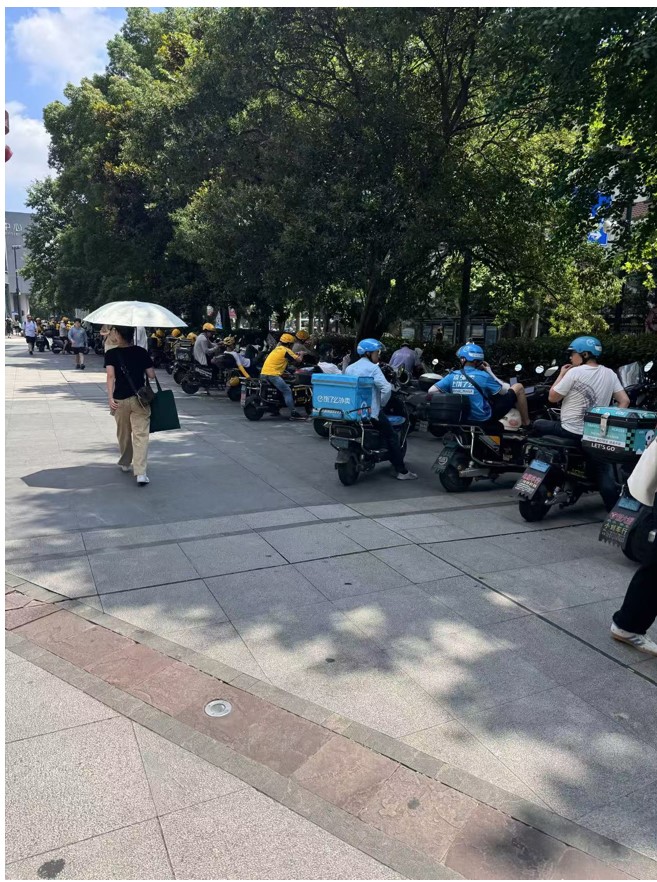
(Food delivery riders waiting for orders)
When you encounter many situations like this, you certainly get the feeling that the Chinese economy is not doing very well.
However, on the other hand, when you walk around the city, you also encounter places that are bustling with activity. I would like to introduce a few shops.
① Supreme Shanghai
When I visited Supreme, which opened in China for the first time this year, there was a line to get in, despite the bad weather. I waited for about 15 minutes and then went in. There was a skateboard bowl inside the store, and there were colorful skateboards on display on the walls. It was a space where you could experience the world of Supreme.
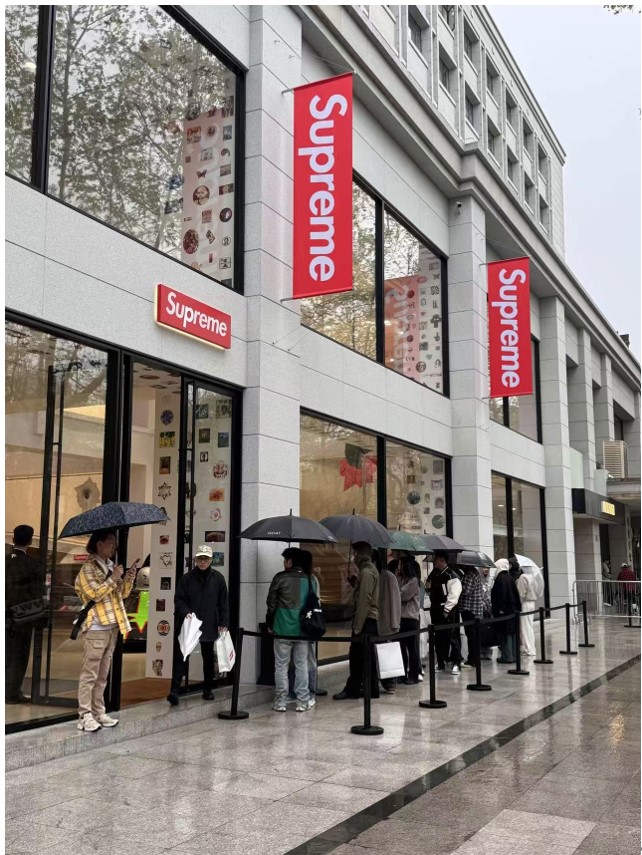
(Even on rainy days, there was a line of people waiting to get in.)
② HAUS NOWHERE SHANGHAI
" HAUS NOWHERE SHANGHAI " reopened this year in the Huaihai Zhong Road area, a street dotted with fashionable shops for young people and known as the Omotesando of Shanghai.
When it first opened, there was a long line of people waiting to get in. This facility is run by the Korean eyewear brand GENTLE MONSTER, and on the first floor there is the pastry brand NUDAKE, on the second floor there is GENTLE MONSTER, on the third floor there are Korean apparel brands such as THISISNEVERTHAT, and on the fourth floor there is the perfume brand TAMBURINS. The store is like a showroom, displaying products and works of art, and it is a space where you can experience the world of the brand.
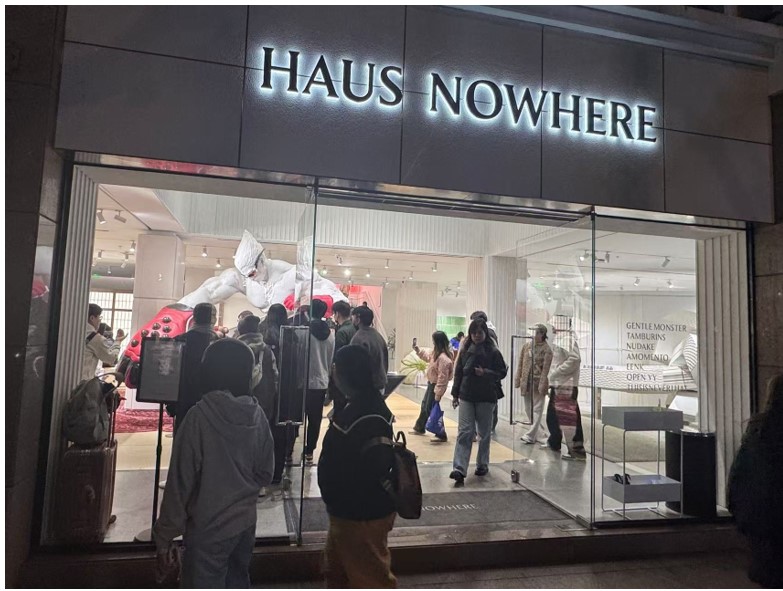
(Many people were taking photos in front of the artwork.)
③ Niku Niku Oh! Kome
" Niku Niku Oh! Kome " opened in the Changning district last year, an area where many Japanese companies are located and many Japanese people live.
It is a restaurant where you can eat freshly-made hamburgers cooked in front of you. The company behind this freshly-made hamburger boom that also took off in Japan during the coronavirus pandemic is Monogatari Corporation, which is well known in Japan for its " Yakiniku King " and " Marugen Ramen " restaurants. The “ Niku Niku Oh! Kome ” set, which comes with three Japanese-style hamburgers, rice and miso soup, is not cheap at 78 yuan (about 1600 yen), but it is very popular, with people lining up for it every day at mealtimes. The company is currently expanding its number of stores in Shanghai, and has also made inroads into Shenzhen and Hangzhou. Inside the restaurant, you can watch the hamburgers being prepared and grilled. When the hamburgers are ready, they are delivered to a small iron plate in front of you. You can grill the hamburgers to your liking, add your favorite condiments from the many condiments on the table, and enjoy them with white rice. The fact that you can see the hamburgers being grilled and that they are delivered to you immediately after they are grilled may be the reason for their popularity.
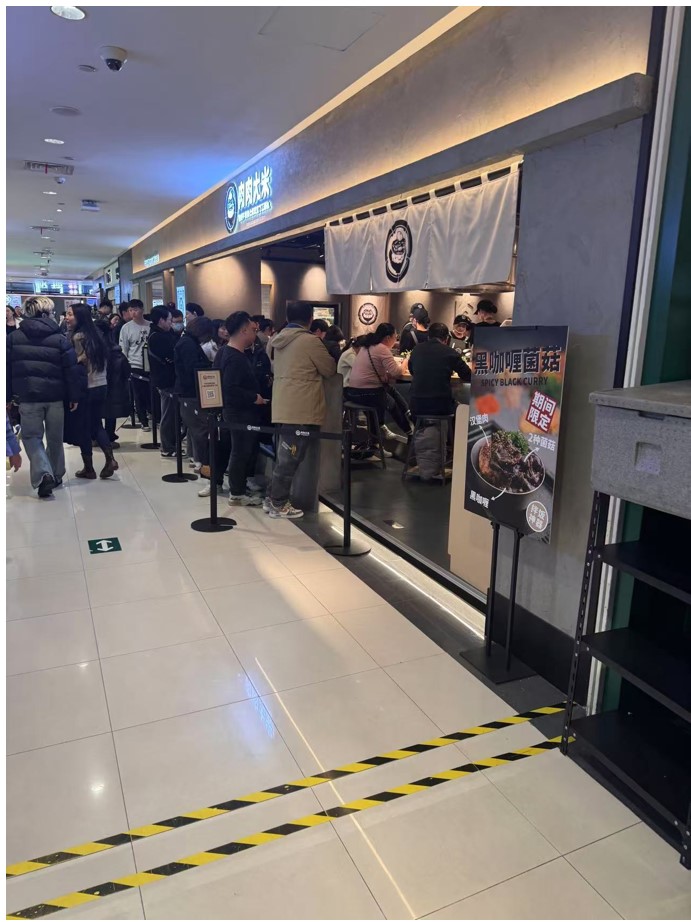
(There is always a queue at dinner time)
As you can see, there are actually quite a few stores with long queues. What these stores have in common is the “experience” they offer. At " Supreme " and " GENTLE MONSTER ", you can “experience” the world of the brand, and at " Niku Niku Oh! Kome ", you can “experience” the process of making the food, rather than just eating the finished product, thanks to the live kitchen in front of you, and you can “experience” making your own favorite level of doneness and seasoning.
As many people may know, China is a major e-commerce power.
According to a 2022 report by the Ministry of Economy, Trade and Industry, the e-commerce ratio in China was 45.3%, the highest in the world. Many people also regularly use online supermarkets such as Hema, which started out selling fresh food. Despite the prevalence of e-commerce, what is the reason for people to go out of their way to visit physical stores? I think it is because they are looking for a “physical experience” that can only be had in a physical store. I think that this kind of cycle has been created, where people post their “experiences” on social networking services such as WeChat Moments, “share them with others”, and people who see these posts also go to experience them for themselves.
As mentioned at the beginning of this article, it is said that the slowdown in the Chinese economy is currently causing Japanese companies to move away from China. And the fact that the problem of the discharge of treated water last year led to a temporary boycott of Japanese products, causing damage to many Japanese companies, has also spurred Japanese companies to move away from China. The data shows this clearly. According to the “Japanese Companies' Overseas Business Deployment Questionnaire Survey” conducted by JETRO in 2023, the United States was the most important export destination for Japanese companies over the next three years, overtaking China for the first time.
Is it really the case that products are no longer selling in China?
Looking at the statistics, it is true that the economy is in a slump, but as I explained in the above example, it is also true that some companies are growing. Living in Shanghai, I can't help but feel that many Japanese companies are attributing their poor performance in China to the sluggish Chinese economy. While it is true that the Chinese economy is in a slump and that there are problems with treated wastewater, I think that the bigger problem is that they are not paying enough attention to the changes in Chinese consumers. It is said that, after the coronavirus crisis, a trend of preferring domestic brands, known as “Guochao”, is spreading in China. There is of course a sense of patriotism, but I think it is also the result of an increase in the number of smart consumers who gather information for themselves, compared to the past. More than 10 years ago in China, all Japanese and Western products were treated as good or desirable, while all domestic products were treated as cheap and poor quality. However, nowadays, many Chinese consumers have learned to distinguish between good and bad products and are now buying products based on this knowledge. When it comes to cosmetics, for example, they gather information about what ingredients are used, how these ingredients work, and whether or not they might have a negative effect on their skin, before making a purchase. They no longer buy products just because they are the number one seller in Japan and must be good. On the contrary, if they know that a product is good for them, they will buy it, whether it is a Japanese brand or a Chinese brand.
I think that the recent economic slump in China has made Chinese consumers more thrifty, but there are also many people who are spending money on the things they are particular about, and saving money on other things, so to speak, making a distinction between what they spend on and what they save on. This trend is similar to that seen in Japan after the collapse of the bubble economy. While there is a strong focus on cost performance, there is also a growing sophistication in terms of consumer needs. As a result, it is true that it has become more difficult to break into the Chinese market than it was in the past, but I think that Japanese companies, which have been fighting against deflation in Japan for many years, actually have a chance to make use of their own know-how. If they judge that a product meets their own needs and is good, they will surely buy it.
Translated with AI Translator
-
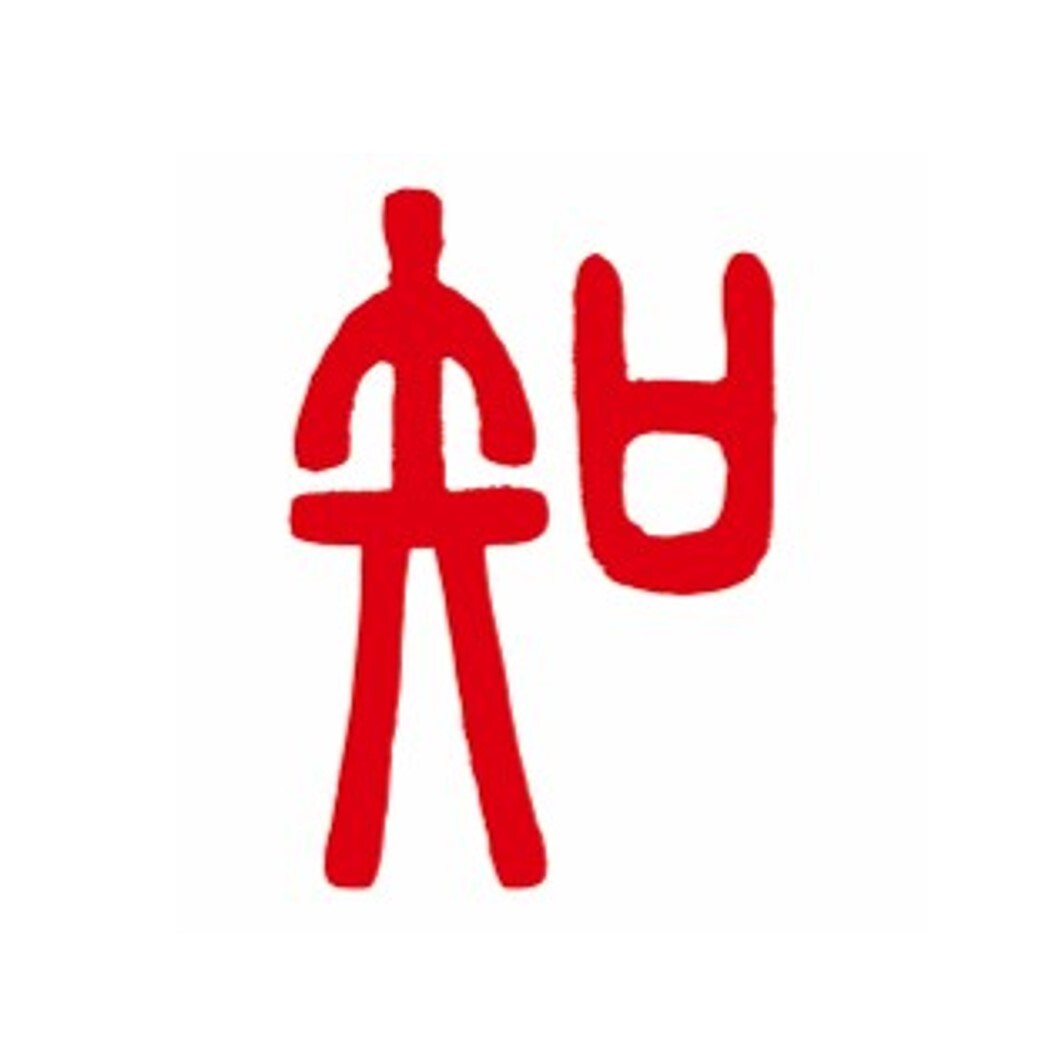
Author profile
Shohei Hashimoto
Joined Intage in 2017.
After gaining research experience in more than 10 countries as a global researcher,
he was assigned to Shanghai in April 2023. Currently, he is engaged in research work with a focus on consumer goods.
He often orders food delivery for lunch on weekdays, not only Chinese and Japanese food, but also Thai food, Indian curry, etc,
Thai food, Indian curry, etc., as well as Chinese and Japanese food. -

Editor profile
Chew Fong-Tat
***
 Global Market Surfer
Global Market Surfer CLP
CLP